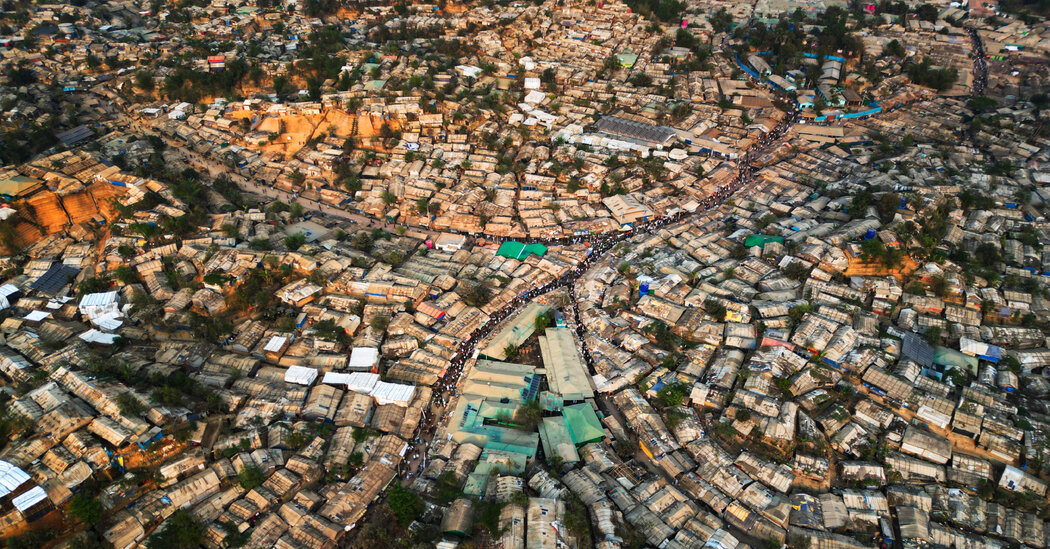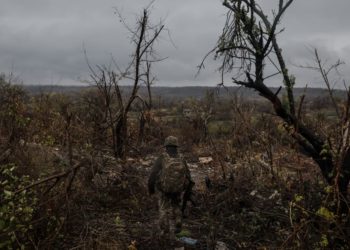Mohammed Faisal sold his computer shop and graphic design business that he had scraped together in the refugee camp in Bangladesh. He even sold his tarpaulin shelter to raise money to move to America.
He told his three sons, born like him in exile, that they would soon be citizens of a country composed of immigrants.
He was wrong. Mr. Faisal, a member of the Rohingya Muslim minority whose violent expulsion from Myanmar has been labeled a genocide by the United States, has been stymied by a series of actions by President Trump that have shut the door on almost all refugees seeking sanctuary in the United States.
On his first day in office, Mr. Trump announced a pause in refugee admissions. In his latest move, a federal notice was posted last week announcing that the United States would accept no more than 7,500 refugees from across the world for the fiscal year that started in October. The previous period’s ceiling, set by the Biden administration, was 125,000.
The new cap is the lowest in the history of the decades-old refugee program, and it was made official without consulting Congress.
The federal notice specified that future refugee resettlement will prioritize a white South African group called Afrikaners, as well as “other victims of illegal or unjust discrimination in their respective homelands.” The South African government has disputed that Afrikaners face such persecution.
In recent years, most of the refugees accepted by the United States have come from the Democratic Republic of Congo, Afghanistan, Venezuela, Syria and Myanmar, all places that have endured conflict or major social upheaval.
Mr. Faisal, who learned his fluent English from classes held in dirt-floor tents and from movies like “Titanic” and “The Terminator,” had been on the cusp of resettling in America when Mr. Trump returned to office in January. His years of immigration paperwork are now paused.
“The U.S.A. is my dream country,” Mr. Faisal, 31, said. “The U.S.A. is a country of immigrants who work hard, and I want to work hard.”
The news of the slashed cap has crushed him, Mr. Faisal said, his voice wracked with sobs.
“I have sold everything,” he said. “I have nothing.”
Mr. Faisal and his family are living with his sister and her family in a single tent. It is too many people for one shelter, he said.
In Thailand, where refugee camps for other ethnic minorities from Myanmar have been open for decades, the number of people who left for the United States in fiscal 2025 was just 465, despite a recently launched program that was supposed to significantly increase emigration to America. A year earlier, more than 7,300 Myanmar refugees were granted entry to the United States, just a couple hundred fewer than the new worldwide quota.
Apart from ethnic-cleansing campaigns, Myanmar has been engulfed by civil war, following a military coup in 2021.
Daw May Hnin’s son got a student visa to study international relations in the United States three years ago, then applied for asylum when the Myanmar junta began to draft young people to fight in the civil war. She had hoped to join him in Minnesota, but in June Myanmar was put on the list of countries bound by a travel ban because of the high number of its citizens who overstayed their American visas. She cried when she learned of the 7,500-person limit, Ms. May Hnin said, wondering if she would ever see her son again.
“I know countries have their limits, but for a mother like me, this isn’t about politics,” she said. “It’s about love, family and the chance to be whole again.”
For others, the United States is the reason they need to flee their homeland. After the Taliban regained control of Afghanistan, thousands of Afghans who were associated with the previous American-backed authority were granted so-called special immigrant visas. But many have yet to reach the United States. The new cap has left them in despair.
“This decision by Trump has broken my hope,” said Saboor, a former supervisor for a U.S. program in Afghanistan.
Mr. Saboor is being identified by only one name because of security concerns. Human rights groups say that people like him who remain in Afghanistan face arrest and abuse by the Taliban, even torture and death.
In 2024, roughly 3,100 Afghan refugees were resettled in the United States each month. From January to May of this year, those arrivals plummeted by nearly two-thirds.
In July, the Trump administration withdrew humanitarian protections for Afghans already resettled in the United States, citing Afghanistan’s “improved security situation and its stabilizing economy.” The removal of their “temporary protected status” could lead to deportations of Afghans to a country where they almost assuredly will face reprisals.
Despite the bleak prospects, Mr. Faisal, the refugee in Bangladesh, said that the election of Zohran Mamdani, a Muslim American immigrant, as mayor of New York City on Tuesday gave him hope that his dreams of emigrating to the U.S. might still one day come true.
“Inshallah,” he said.
Yaqoob Akbary contributed reporting from Kabul, Afghanistan, and Elian Peltier from Islamabad, Pakistan.
Hannah Beech is a Times reporter based in Bangkok who has been covering Asia for more than 25 years. She focuses on in-depth and investigative stories.
The post ‘Broken My Hope’: Trump’s Move to Slash Refugee Arrivals Ricochets Widely appeared first on New York Times.




